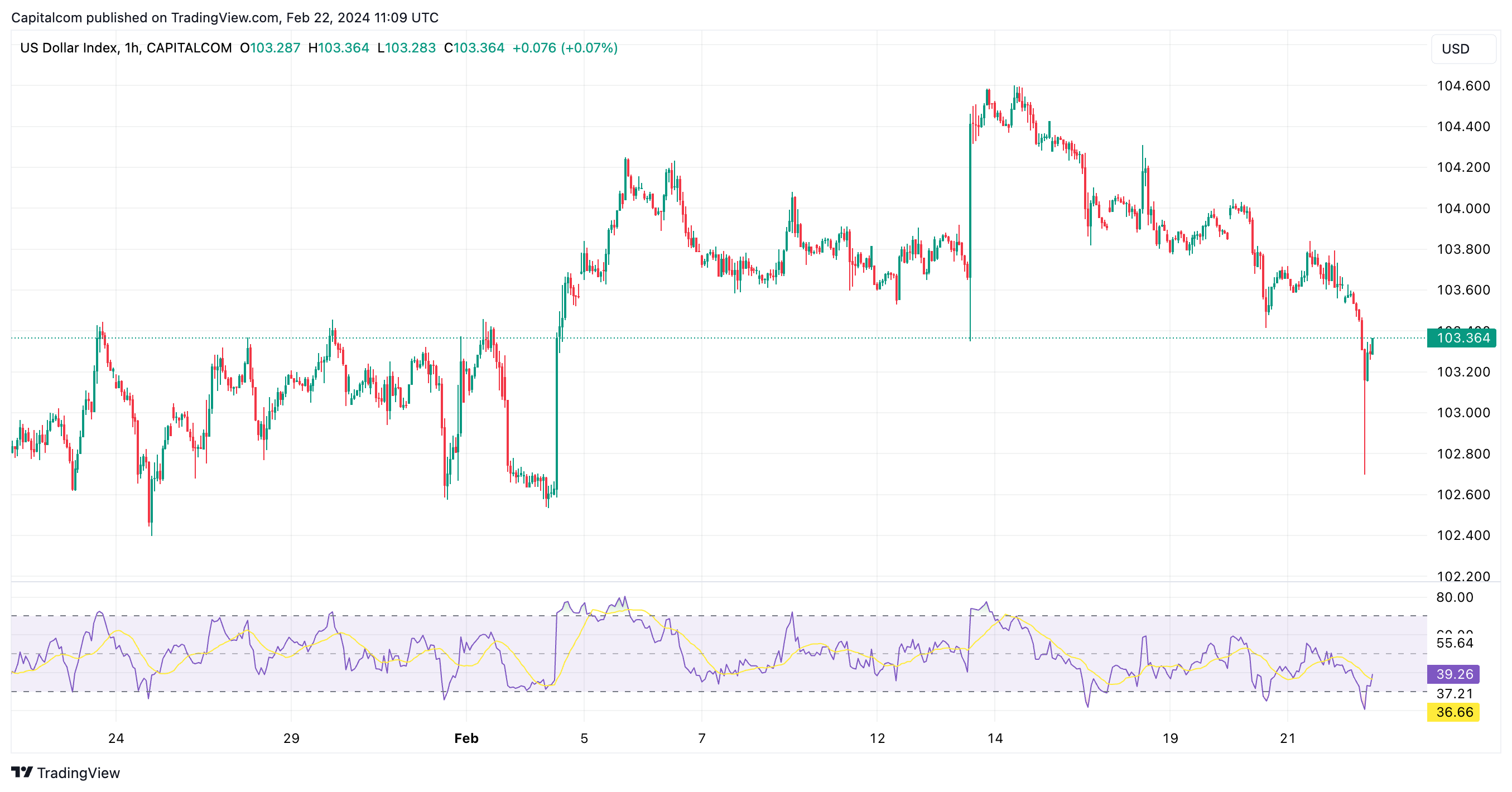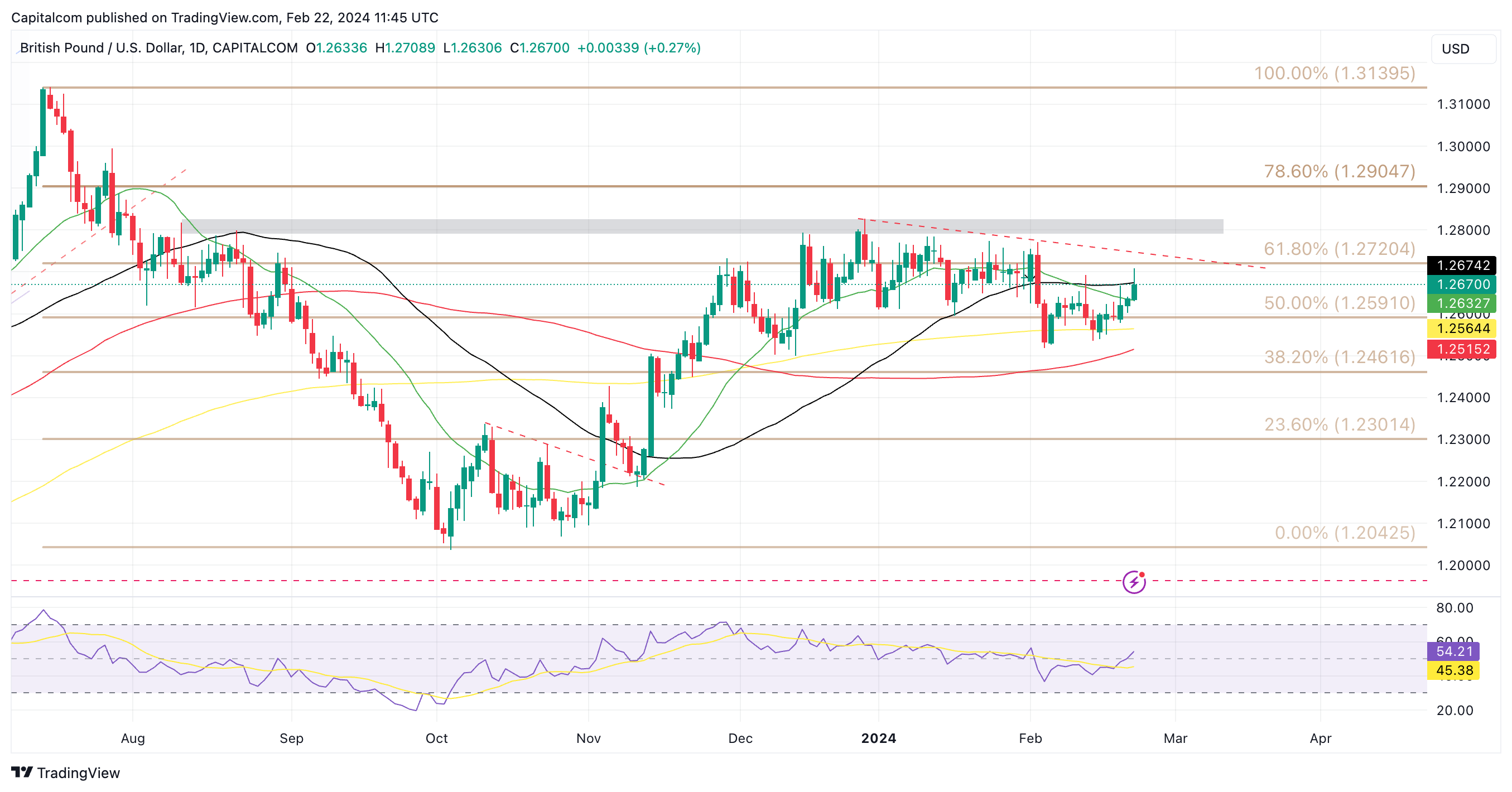USD weakness continues despite FOMC minutes highlighting a lack of desire to cut rates
EUR/USD and GBP/USD take advantage of a weaker dollar
Last night’s FOMC meeting minutes failed to change the mood in USD trading. The dollar index dropped to a three-week low at the European open on Thursday allowing EUR/USD and GBP/USD to continue their recovery. Some of the weakness in the dollar has since been reversed but the short-term bias remains lower despite the FOMC meeting minutes confirming on Tuesday evening that the central bank does not expect cutting rates any time soon. Futures markets are currently pricing in a 29% chance that the first 25bps cut could come in May.
US Dollar Index (DXY) one-hour chart Past performance is not a reliable indicator of future results.
Past performance is not a reliable indicator of future results.
Once again, Fed decision-makers reiterate the need to see inflation fall further before considering cutting rates, highlighting the risks of cutting too soon. This isn’t new information for markets to digest, especially as the January inflation reading came in higher than expected, but dovish hopefuls were paying close attention to see if any signs of weakness had crept into the minutes. Equity markets dipped slightly after the minutes were released, but recovered quickly after NVIDIA’s strong earnings reignited risk appetite amongst traders.
Surprisingly, the US dollar failed to keep up with rising yields and the dollar index ended the session lower. This highlights the fact that the recent rally had been overextended and that bullish appetite in the currency has faltered, despite the ongoing hawkishness of the Federal Reserve.
EUR/USD tested resistance at the 50-day SMA (1.0883) this morning but failed to push higher as the pair retreated to 1.0850. The short-term bias remains higher as the pair is still holding above some of its key moving averages, but there is likely to be increased resistance as the fundamentals still favour the dollar slightly over the euro. That said, the continuation of risk appetite in markets has pushed back the need for safe-haven demand, weighing on the dollar despite the stronger stance from the Fed. Buyers will likely be targeting the 1.09 level as the previous recovery back in January failed to get a close above this level. After this, 1.0970 will be the next area to test the bullish appetite before looking towards the 1.10 area, which can be a psychological resistance for some traders.
EUR/USD daily chart Past performance is not a reliable indicator of future results.
Past performance is not a reliable indicator of future results.
GBP/USD has also taken advantage of the weaker dollar despite the weak economic outlook in the UK. The pair has been building on the higher lows with the RSI moving into positive territory for the first time since the beginning of February suggesting further advances may be on the cards if the current resistance at 1.2710 can be cleared this week. Buyers should note the descending trendline from the 28th December highs that has been limiting the advances since then, currently sitting around 1.2745.
GBP/USD daily chart Past performance is not a reliable indicator of future results.
Past performance is not a reliable indicator of future results.